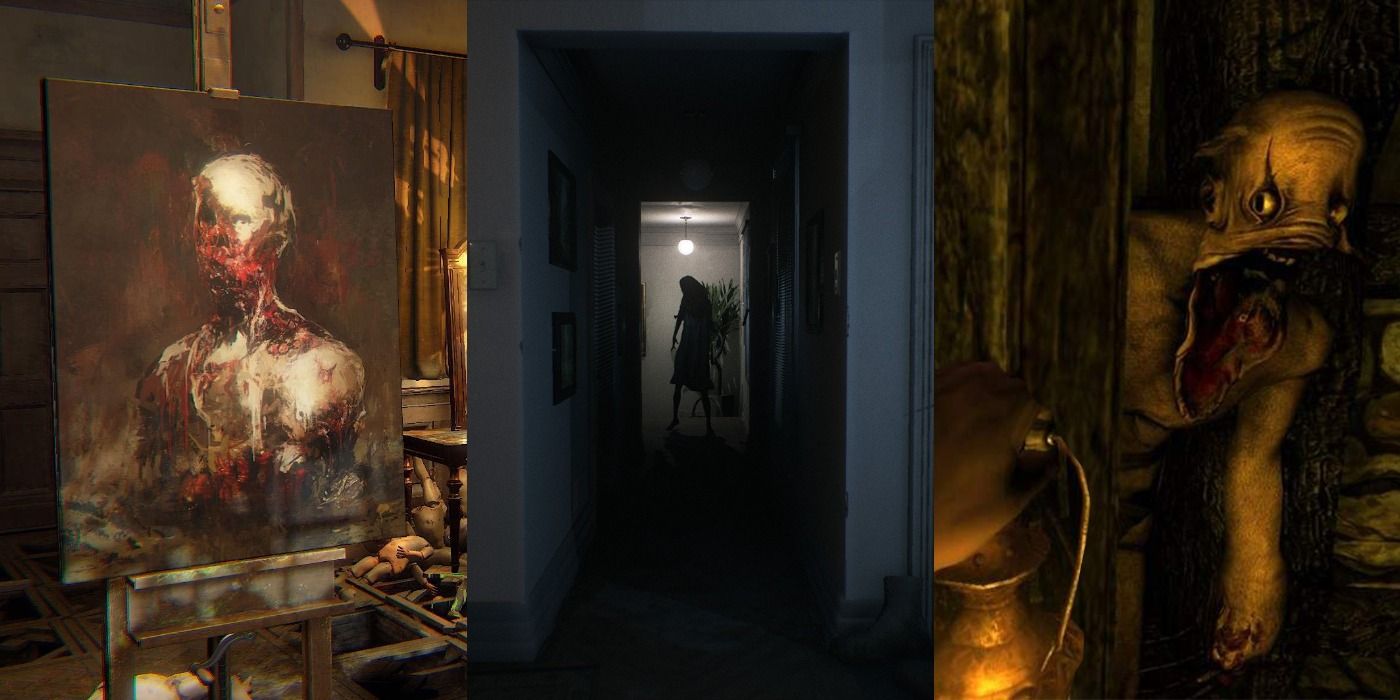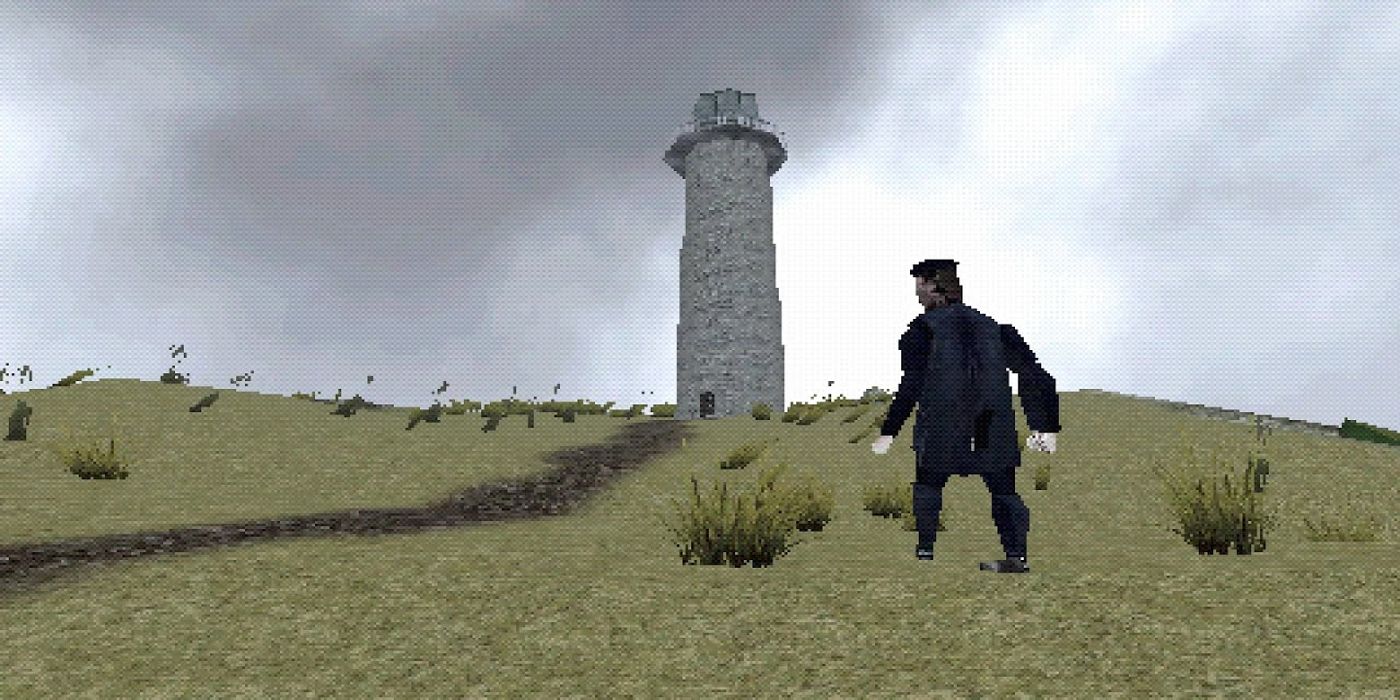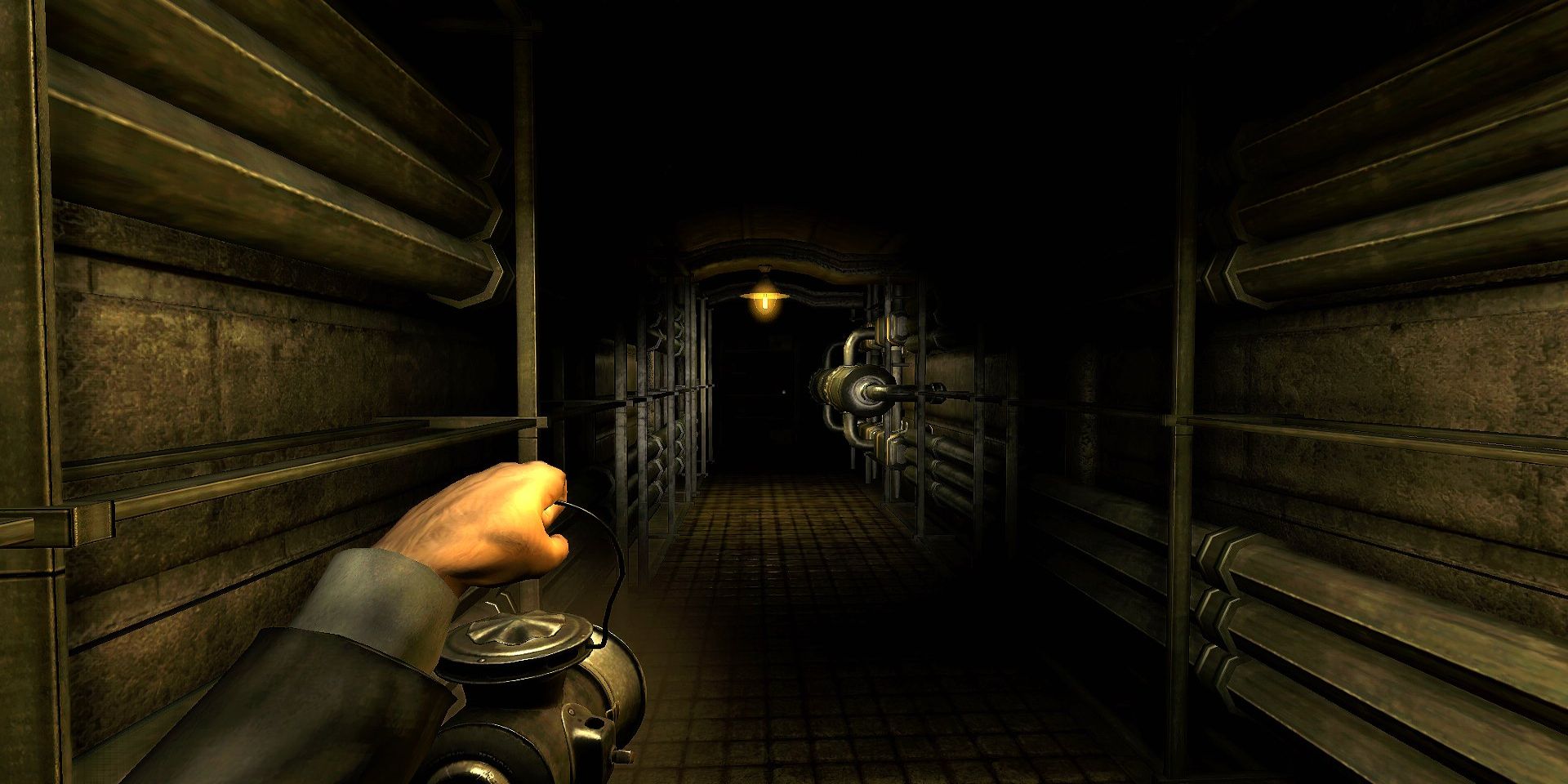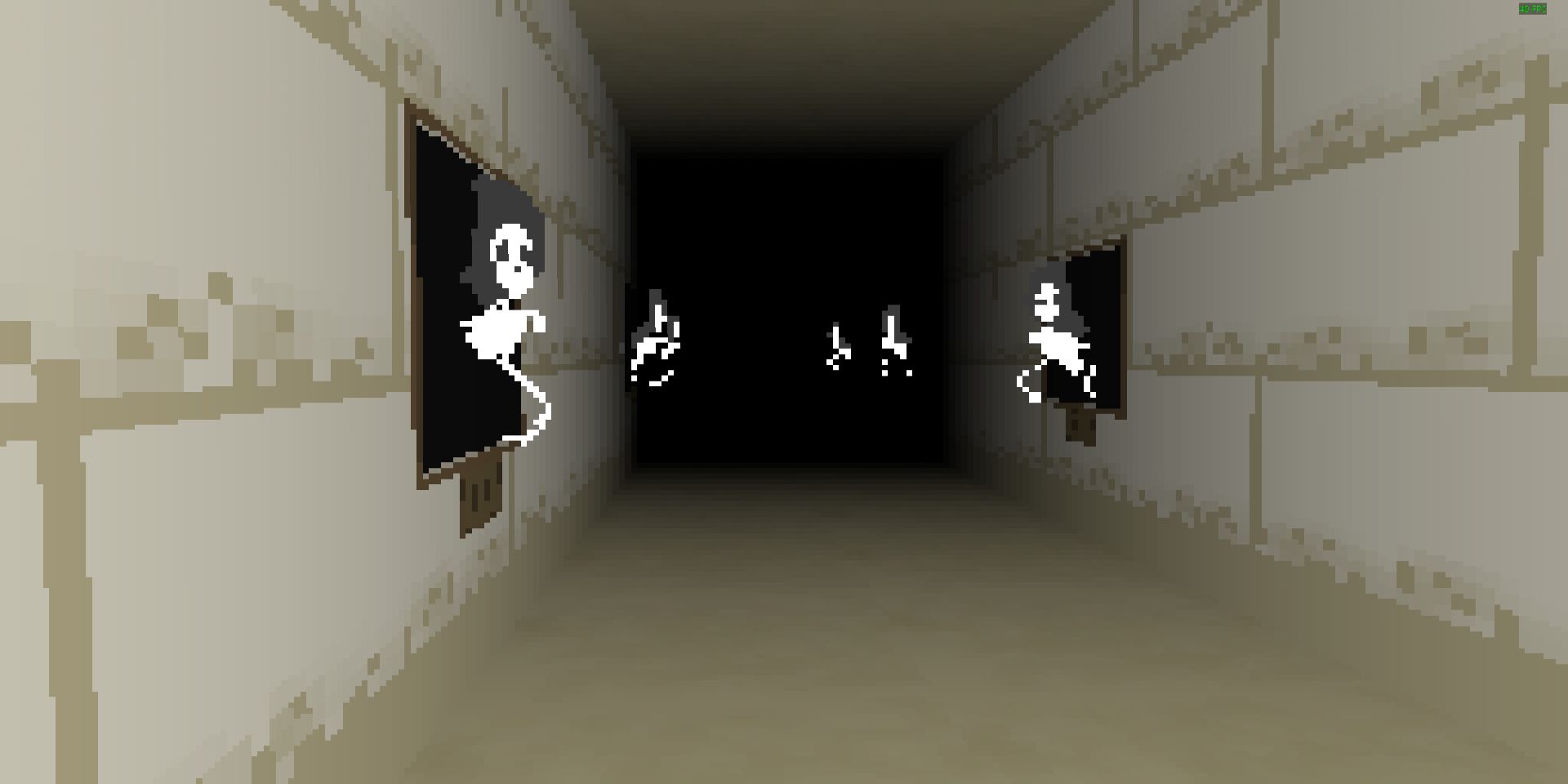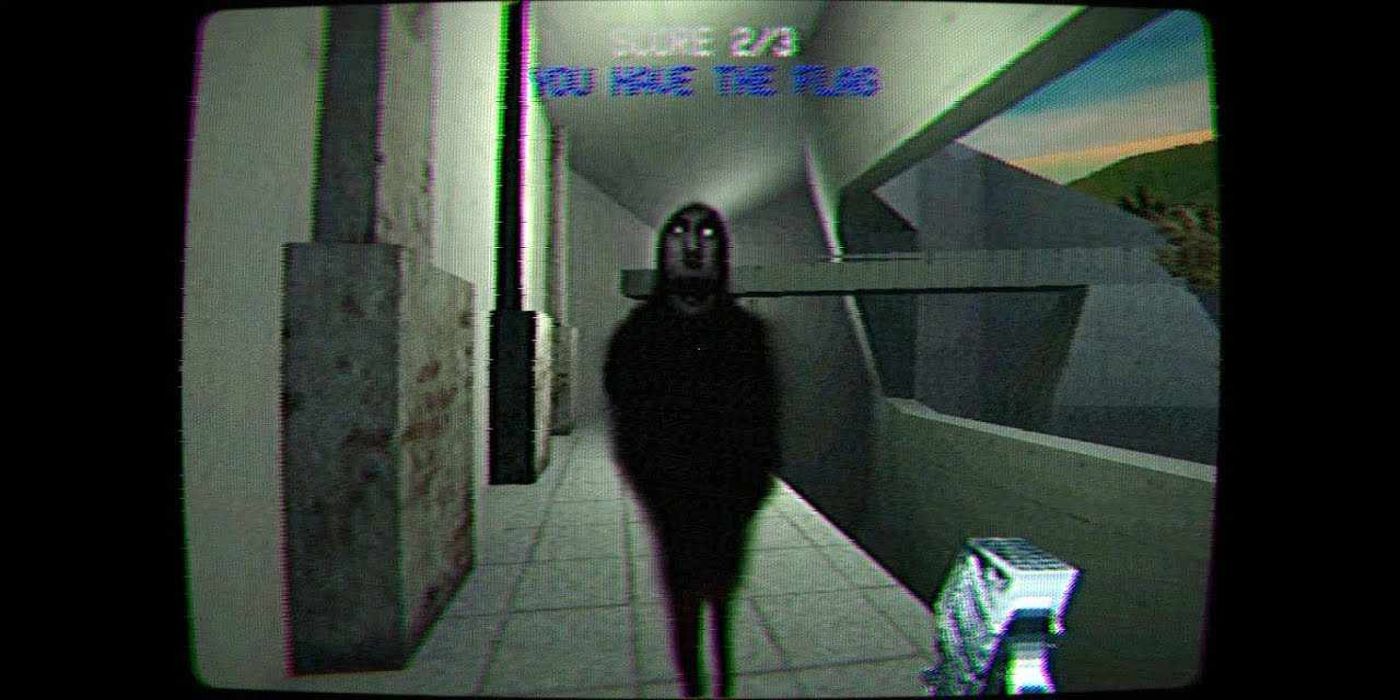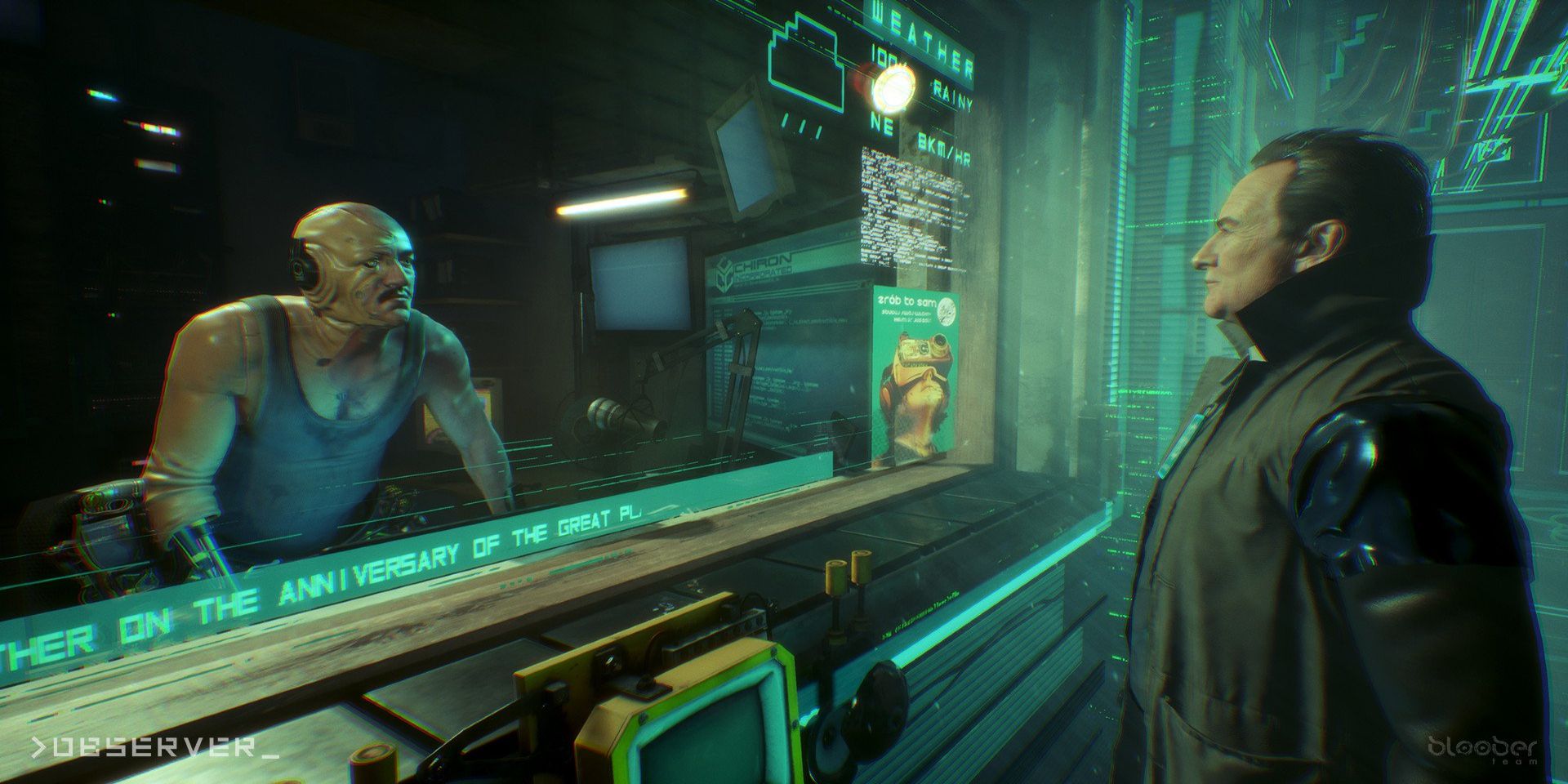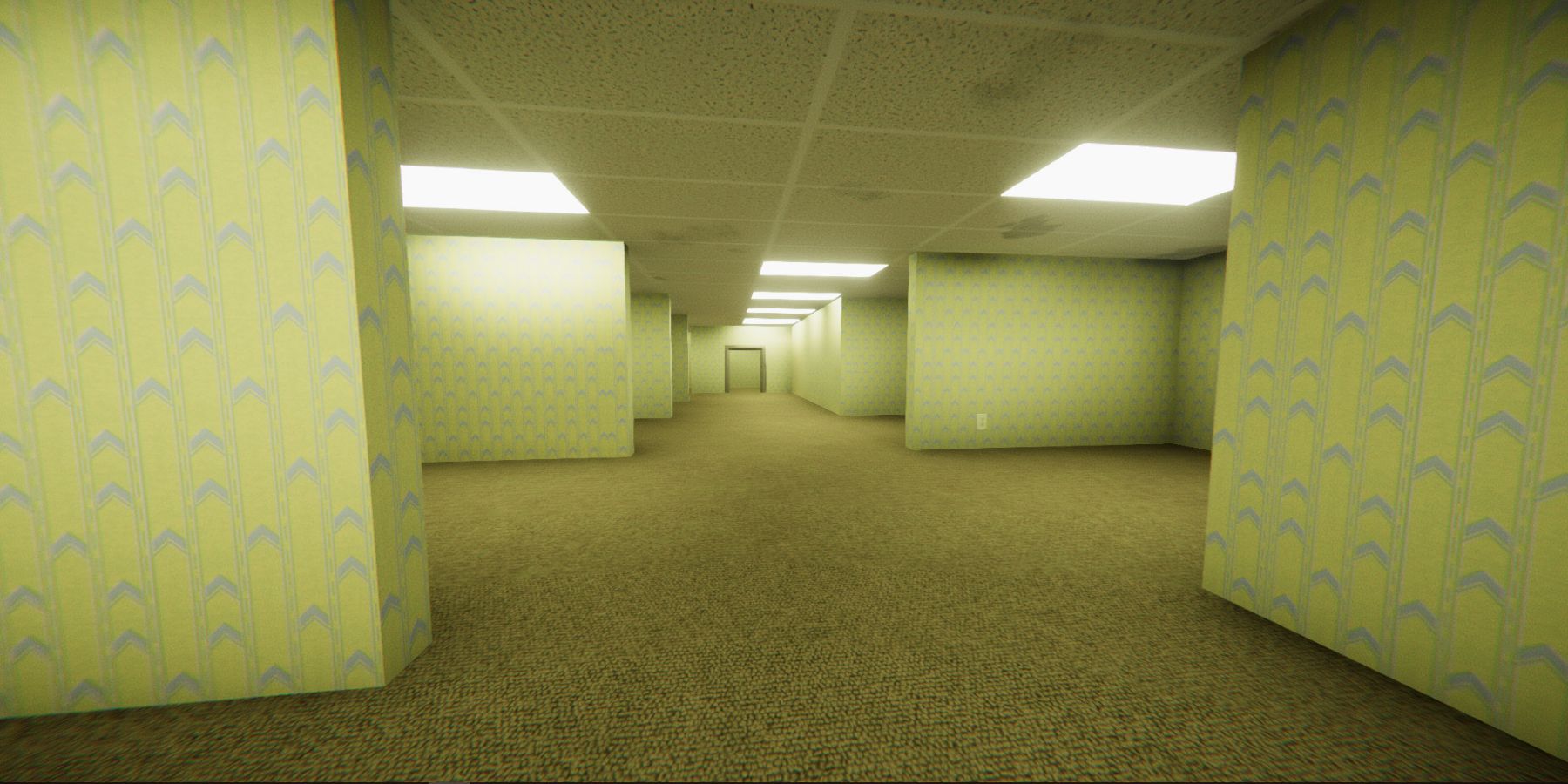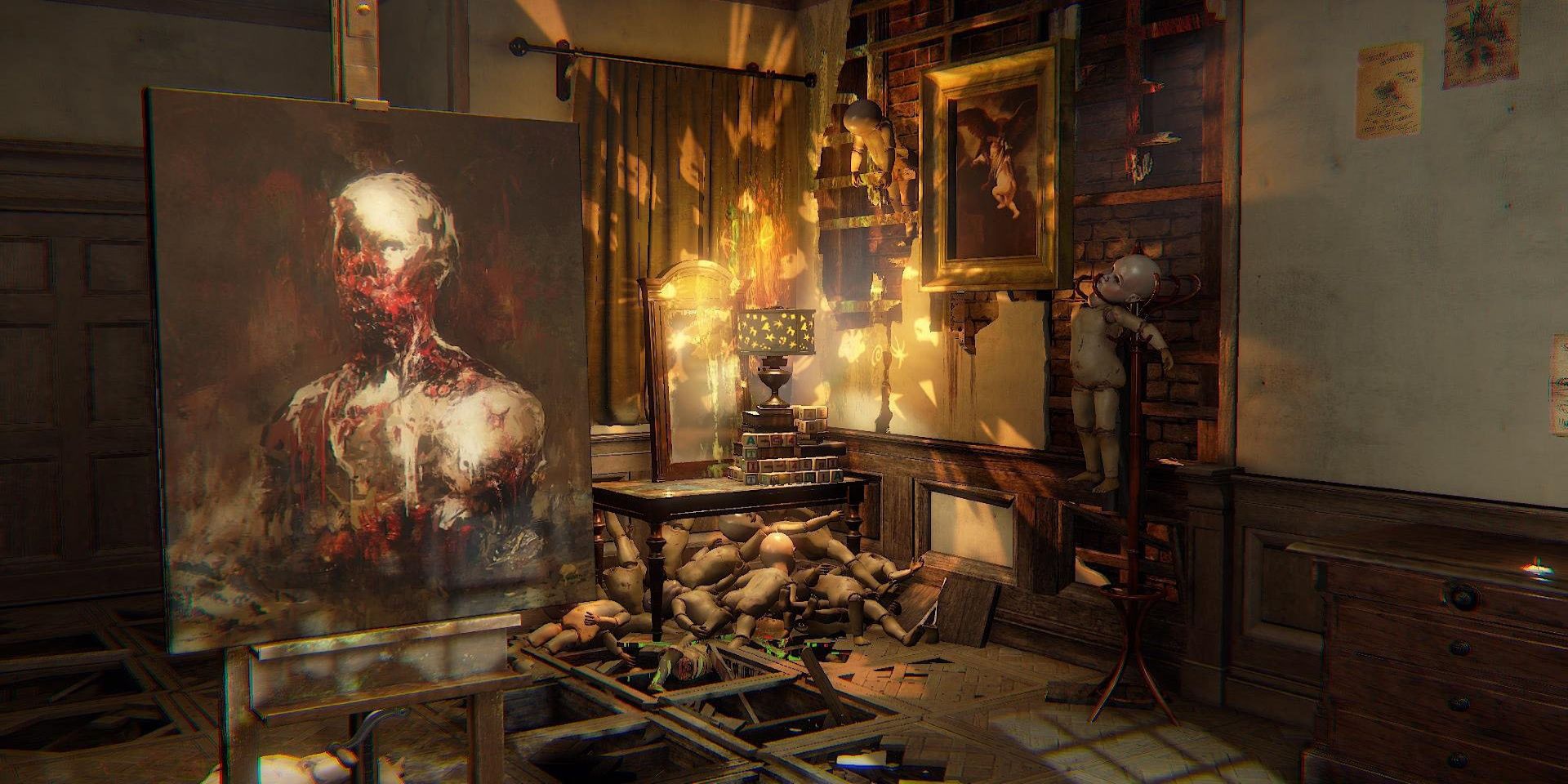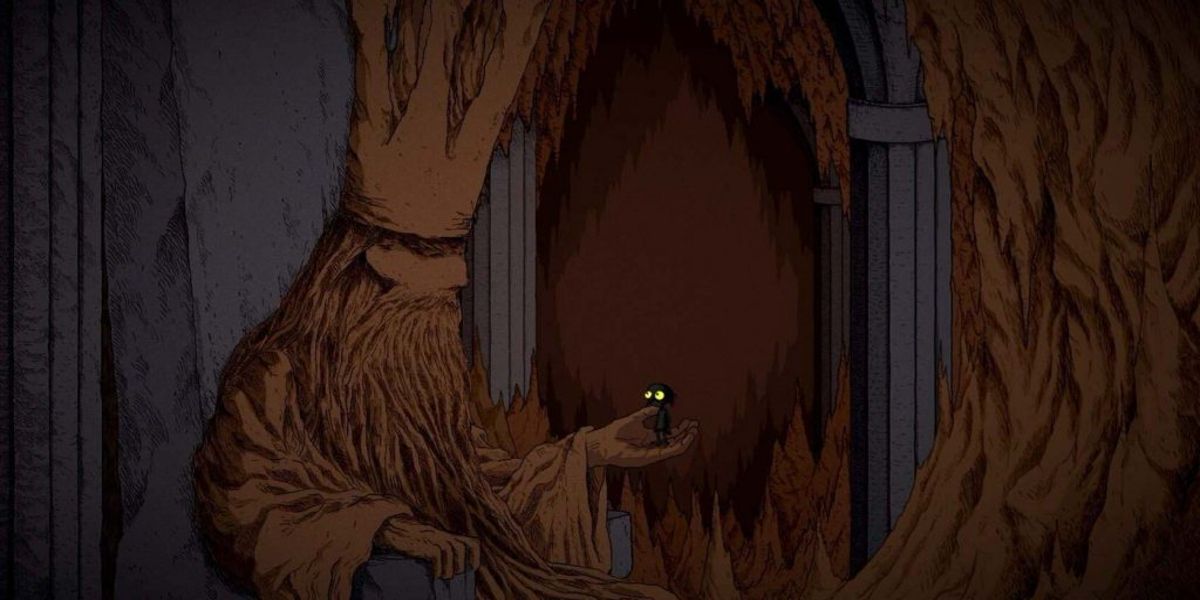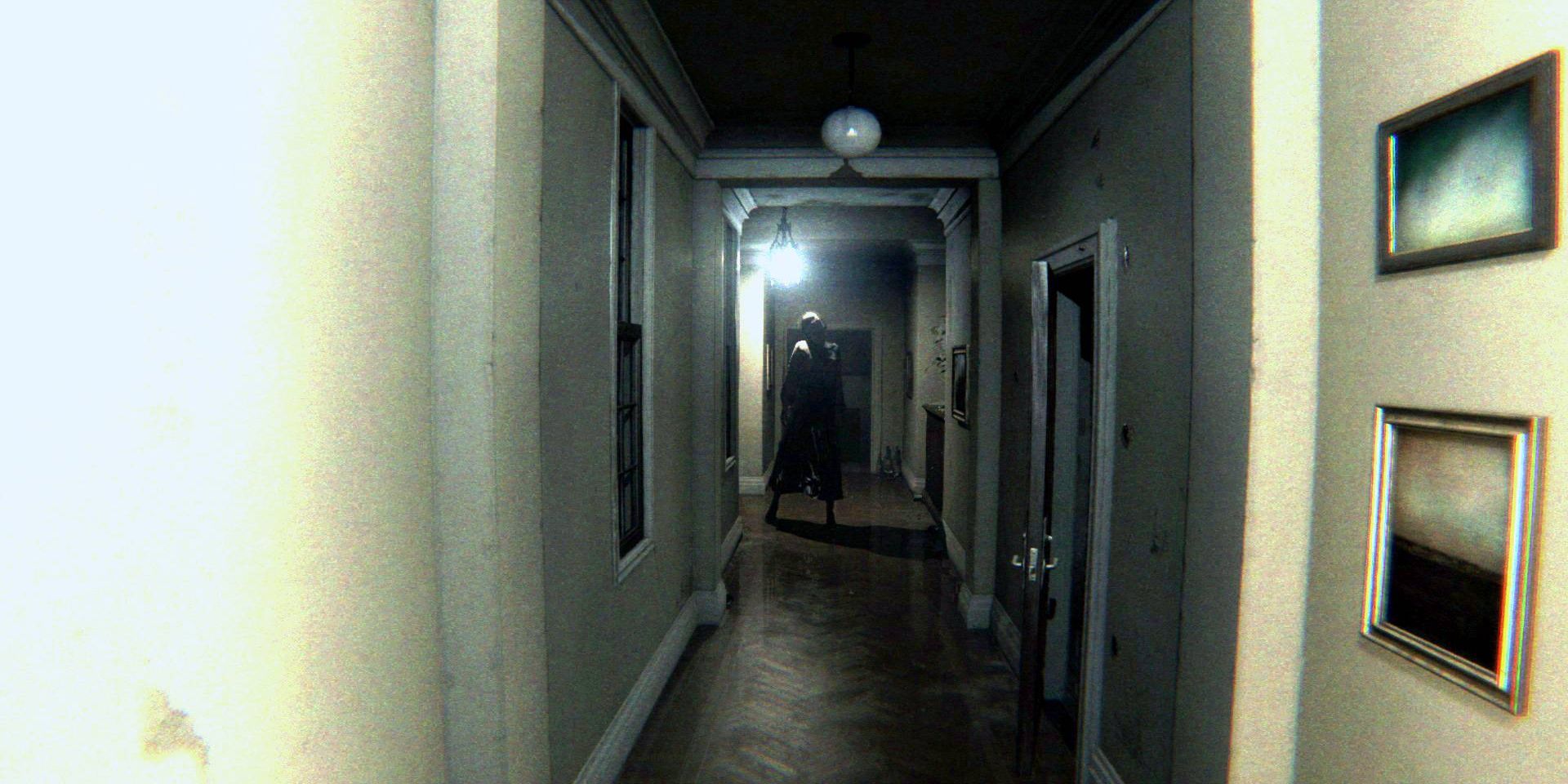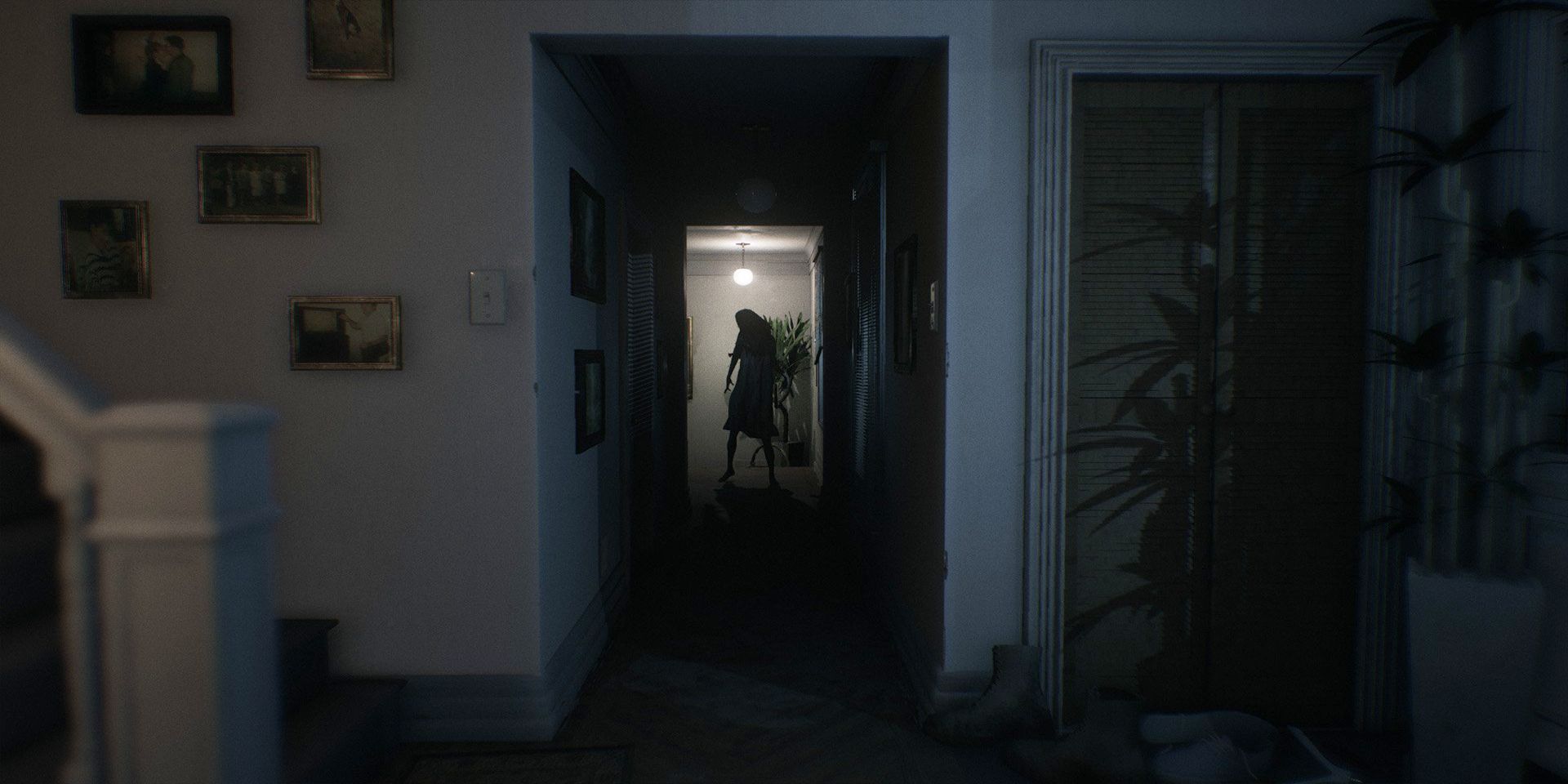In the pioneering years of the medium, most games tasked players with beating high scores or besting their friends in simple one-on-one challenges. However, as technology improved, gaming became a new frontier for creativity, and the focus shifted from simple tests of skill to lengthy adventures with inventive narratives.
Eventually, some ambitious developers worked to remove the "game" aspect of video gaming almost entirely, producing experiences that were more akin to interactive movies. While removing player agency might seem like a step in the wrong direction, some of these so-called walking simulators are masterworks in design and presentation. Plus, it's proven to be fertile ground for horror auteurs.
No One Lives Under The Lighthouse
Visually, No One Lives Under The Lighthouse is a throwback to the early days of 3D console gaming. However, the gameplay and story are cutting edge, advancing a terrifying, Lovecraftian narrative of a sort that was certainly very few and far between in the 1990s.
With bizarre and eerie twists and turns that pull from various cosmic horror influences, No One Lives Under The Lighthouse is tense, atmospheric, and delightfully inventive. It's tough to anticipate what might come next, and a strange twist during the game's second half will take most players by complete surprise.
Amnesia: A Machine For Pigs
The follow-up to the highly-acclaimed first-person horror title Amnesia: The Dark Descent, A Machine For Pigs deviates fairly significantly from the formula established by its predecessor, removing much of the hide-and-seek style encounters with enemies and attempting to place a larger emphasis on the narrative.
Unfortunately, that change proved to be pretty derisive. That said, while it exists in the shadow of the first Amnesia title, A Machine For Pigs is a great game for those looking for a more straightforward horror experience.
IMSCARED
Another game that deliberately evokes the stark polygonal style of very early 3D gaming, IMSCARED made the YouTube let's play rounds in the mid-2010s, earning quite a bit of report for its dread-filled atmosphere and meta gameplay mechanics. A viral hit that has unfortunately been forgotten in more recent years, IMSCARED is easily one of the most unnerving walking simulators of all time.
While it can be beaten in less than an hour, it's full of twists and turns, and it wields the uncanny ability to keep the scares coming even after the game window has been closed.
No Players Online
Another unlikely title to earn viral fame, No Players Online is a short-and-sweet experience framed as a VHS recording of an unreleased multiplayer FPS game. Players explore the uninhabited map of a game that was never meant to see release, all the while enduring all sorts of strange circumstances.
Meant to evoke the unshakable sense of liminal horror felt when in empty spaces that should typically be full of life, No Players Online warps perceptions and encourages players to see the uncanny in the otherwise mundane.
Observer
Developed by Bloober Team, the indie studio that would go on to release the 2019 video game adaptation of The Blair Witch Project, Observer marries the horror of games like Amnesia: The Dark Descent with the far-future dystopia of Blade Runner to create something unique.
While there's a little bit of the cat-and-mouse gameplay seen in similar titles such as Outlast or the previously-referenced Amnesia, the game puts a greater emphasis on cyberpunk detective work and the subtle dread of a near-ruined Krakow. Walking simulators may not be for everyone, but this is a must-play regardless of genre preference.
The Backrooms Game
In the same vein of internet-era tales of Slenderman or Squidward's Suicide, The Backrooms is an online phenomenon that gained popularity in early 2019. Said to be an alternate dimension of almost-infinite hallways lit by buzzing fluorescent lights and decorated in a deteriorated office drab, it has captivated creatives and influenced some of the most interesting amateur films and solo-dev games of late.
Released shortly after The Backrooms gained widespread appeal, The Backrooms Game is a randomly-generated maze that tasks players with wandering as far as possible into the delirium of the doldrum. However, there's something else lurking in the distance that shouldn't be seen.
Layers of Fear
Likely Bloober Team's most well-known effort, 2016's Layers of Fear was a paragon of the walking simulator genre that helped to legitimize what was then considered by many to be an uninteresting gaming niche. A tale of madness and morbidity centered around an artist who seeks to complete a magnum opus of sorts, Layers of Fear abandons combat of any kind and plays like something of an interactive haunted house carnival ride.
While that may seem a bit tame, Layers of Fear quickly flies off the rails, delivering one of the most frightening, pulse-pounding walking sim experiences of all time. Much like Bloober Team's Observer, this is a must-play, particularly for horror fans.
The Longing
Advertised as a title that takes 400 real-world days—or 9600 hours—to beat, The Longing is a test of patience that asks players to endure their tedium to persevere. An arthouse endeavor that challenges gamers in ways no game has before, it may not be in first person, but it strikes at the very core of the walking sim genre.
Fortunately, players don't technically have to wait out the full 400 days, as there are items that can be found that hasten the flow of time. That said, it's still a one-of-a-kind title, the completion of which would warrant some serious bragging rights. Additionally, while it's not a horror game in any conventional sense, it offers a sort of existential dread absent from almost anything else in modern gaming.
P.T.
P.T. is one of the greatest tragedies of the modern gaming environment. A demo that quickly became one of the most beloved entries in the Silent Hill series, publisher Konami pulled the plug on the project after falling out with director Hideo Kojima.
A single hallway that repeats in perpetuity, P.T. evokes a sense of tangible dread that players likely hadn't felt since Silent Hill 4. The gameplay progresses when players take note of subtle changes in the environment, and things go from bleak to completely horrific throughout the experience.
Visage
Developed and published by the indie team SadSquare Studio, Visage takes undeniably influence from Silent Hill P.T., crafting an experience that contorts normal and familiar settings such as a bathroom or closet into something unimaginably frightening. It drew so much from the Silent Hill franchise that the development team included a very blatant Easter egg reference to Silent Hill 4.
While P.T. is certainly more celebrated, Visage deserves props for weaving a fully-fledged narrative around a fairly limited premise. A bit like a playable version of the Paranormal Activity movies, Visage dares even the most seasoned horror veterans to endure its terrors.

